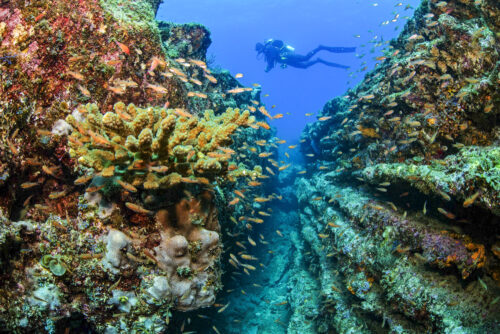
From Community Focus to Global Inspiration: Arran’s 30-Year Marine Protection Model
How the community of Arran has gone from drawing inspiration to becoming a national and global leader in marine conservation and community-led ocean protection
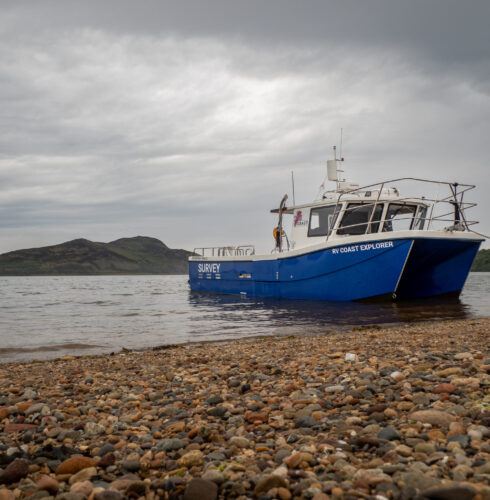
The Firth of Clyde, wrapping around the Isle of Arran—often called “Scotland in Miniature”—has long been a rich seascape steeped in shipbuilding, small-scale fishing, and maritime heritage. For thousands of years, people have lived on Arran, shaping a deep connection to the land and sea, which continues to guide their stewardship today.
Once among the most productive fishing grounds in Europe, the Firth of Clyde sustained generations of families, but its abundance began to unravel in 1984 when the British government lifted a long-standing ban on bottom trawling, bowing to commercial fishing interests and international seafood demand. By the 1990s, the sea angling industry had collapsed, and the iconic Lamlash Sea Angling Festival was cancelled, taking with it a sector worth over £9 million to the local economy.

In the face of this decline, two local divers—Howard Wood and Don MacNeish—and their small island community refused to stand by.
What started as two ordinary people determined to protect their local waters—with no clear pathway to do so—led Don on a journey that took him halfway around the globe. Inspired by New Zealand’s pioneering work in establishing marine reserves, Don traveled there to learn firsthand that community-driven marine protection was possible. What he saw—and learned—ignited a grassroots movement back home, fueling the drive to protect Arran’s own waters. That movement – the Community of Arran Seabed Trust (COAST) – grew over the next three decades into a beacon of community-led conservation. Their success—anchored in local knowledge, science, and unwavering community spirit—led to the creation of Scotland’s only, and the UK’s first community-led No Take Zone in Lamlash Bay in 2008, followed by the legal management of the South Arran Marine Protected Area in 2016.
This is a story of resilience, determination, and the catalytic power that ignites when coastal communities witness others turning the impossible into reality—reclaiming and reviving their ocean backyards for generations to come.
The Ripple Effect: Shared Solutions from the Tasman Sea to the Clyde
As the well-known conservation saying goes, ‘You can’t protect what you don’t know.’ But just as vital is a quieter truth: in conservation, as in life, ‘You can’t become what you can’t see.’ When communities witness others successfully protecting their waters, it sparks possibility—and a powerful ripple effect of action.
Today, COAST marks 30 years of the people of Arran protecting their marine life and livelihoods.
This incredible movement began, as many do, with ordinary people. Though they lacked formal conservation training, their knowledge ran deep—shaped by lived experience in island communities and local businesses. What they did have was persistence, and an unshakable determination to protect the coastlines and underwater world they knew so intimately. That conviction helped them succeed where other efforts had previously faltered.
They found strength and inspiration from like-minded individuals on the other side of the world who shared their passion. As divers, Howard and Don had witnessed the devastation firsthand in their own waters: collapsing fish and shellfish stocks, and habitats disappearing before their eyes. They knew something had to change. What they didn’t yet know was how—or even where—to begin.
“At the time, nothing like that existed in the UK,” Howard recalls. “It wasn’t like today where you can Google a project across the world and reach out to the people doing it.”
That turning point came in the early 1990s, when Don traveled to New Zealand and visited the Leigh Marine Reserve, established 13 years earlier. Originally spearheaded by academics in collaboration with a few local fishermen, the initiative soon gained the support of the wider community. While in New Zealand, Don met some of the key figures behind the reserve, including the renowned marine biologist Dr. Bill Ballantine, who would go on to mentor both Howard and Don for many years.
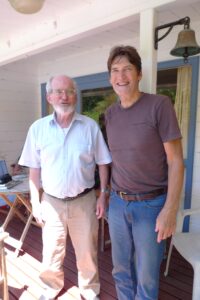
Howard remembers Don returning from his travels, having looked at other projects around the world—especially in New Zealand and Australia—to learn from both their mistakes and successes.
“Don said, ‘I think we should do something like that on Arran,’” Howard recalls. “Being pretty naive, like I still am, I said, ‘Yeah, let’s give it a go.’”
Seeing what was possible—and what had already been achieved—a shift happened. For the first time, there was a reference point, a working model of how ordinary people could protect their local waters.

That moment set in motion the initiative that became COAST. What began as a question—“Could we bring the fish back?”—became a mission. And so began a movement that would deeply engage the wider Arran community in a long and winding journey toward effective marine protection—one that would ultimately deliver far-reaching benefits. Beyond positive species recovery – such as an 8-10 fold increase in King Scallops between 2013 and 2022 – it led to ecological renewal and economic revival, with impacts rippling well beyond Arran’s waters.
Full Circle: From Learning to Becoming a Beacon of Community-Driven Coastal Protection
Like their friends in New Zealand, COAST’s story came full circle to kindle something larger along Scotland’s coastlines.
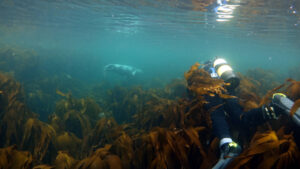
Since the creation of the No Take Zone in 2008, COAST started to receive requests for support from other Scottish communities that wanted to protect their coastal areas from dredging, trawling or salmon farming.
In 2017, partnering with Flora and Fauna International, COAST was fundamental in the formation of Scotland’s Coastal Communities Network—a growing alliance driven by the belief that by sharing our experiences, challenges, failures, and successes, we can work stronger, faster, and more efficiently to protect our ocean backyards. What began with COAST sharing their story with a handful of groups has since expanded to over 30 member organizations, each working to protect their unique stretch of coastline. While each community faces unique challenges, they are bound by a common vision: stronger marine protection, better management, and united, collective advocacy to revive healthy, thriving coastal waters.
“Ultimately, regardless of where in the world you are, or what your key focus is on, your ultimate aim is better management and protection for your local waters to support the socioeconomic benefits to your community,” says Jenny Crockett, COAST’s Outreach and Communications Manager who has been with the organization for a decade.
“I’ve been with COAST for ten years, and even in that time, I’ve witnessed the growth of a much stronger and more robust community, built on peer-to-peer learning. When I think about the Coastal Communities Network in Scotland, it all started because people turned to COAST and said, ‘We can learn from you!’ And at the same time, we at COAST responded, ‘Yes, but we can learn from you too!’ Whether it’s learning from our mistakes or from things you’ve already done that we’re just starting, it’s about sharing what works and making it more efficient.”
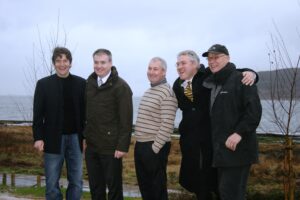
“Once again, it’s about that collective voice, all echoing the same core message: no matter the angle, this is about improving our inshore waters—and, in turn, strengthening the socioeconomic climate of Scotland’s coastal communities and everyone with an interest in our seas. Starting at the community level, as COAST well knows, gaining that community support gives you a powerful foothold to push for change. Because when the government hears this unified voice, it suddenly thinks, ‘These communities want it.’
Celebrating 30 Years: Reviving Our Ocean, One Coastal Community at a Time
As Howard puts it, “Healthy seas mean healthy, wealthy coastal communities.”
Since establishing Scotland’s first No Take Zone (NTZ) in Lamlash Bay in 2008, COAST has seen a true revival of Arran’s marine ecosystems. Enlisting local divers to work alongside academic scientists to monitor the coastline to enforce the new rules, there was a dramatic recovery of seaweed beds, crustaceans and juvenile scallops in just a few years.
From that first eye-opening trip to New Zealand to winning the Goldman Environmental Prize and being named one of just 20 ‘Outstanding Practices’ among 200+ entries from 26 countries across 7 continents, COAST has come a long way.
“Whether it’s your fishing livelihood or tourism in the area, everything is inextricably linked,” shares Jenny. “We’re all connected. The ocean makes the planet one. It takes a lot, but if everyone was locally protecting their coastlines everywhere, we’d have much healthier seas. We can make a difference in our coastal waters.”
DIVE DEEPER INTO COMMUNITY-LED OCEAN PROTECTION

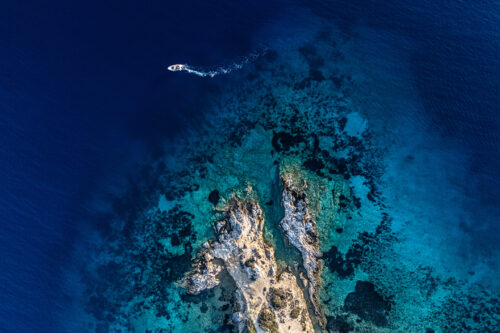
Amorgorama: A Fisher-Led Movement to Revive a Greek Island
